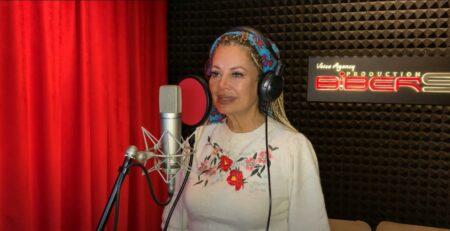What is Audio Description? How is Audio Description Made?
Recently, with the rise of digital platforms, we have started to hear the term audio description. So what is audio description? Why is audio description done?
What is Audio Description?
Audio description consists of an external voice speaking to parts other than dialogues in areas such as film or theater, describing the place, time, characters and silent events, describing their appearance and feelings. Cinema films, video films and everything in the nature of cinematographic works and theater plays are the whole of the techniques that allow the visually impaired to watch these works alone without help from anyone, by making a special editing of an external sound that fills the parts except the dialogues for the visually impaired.
For the visually impaired in scenes where there is no narrator or speech in a movie, series or theater play, it is the way of describing the appearance and feelings of the place, people, time and characters, and the way of depicting the visual elements and some movements that draw attention in that scene. Description, in a way, to draw pictures of beings, objects and events with words, to make beings visible with words, also reflects the impressions that qualities arouse in our inner world, in a simple conversation. A qualified voice is generally not preferred when describing. However, attention is paid to having basic skills such as diction, intonation and articulation as a minimum. While describing, the voice actor watches the movie simultaneously and makes synchronous voiceovers. The synchronous description sound received by the technician is then mixed with the general sound of the film and a new render is made.
In short, for description, it can be said that perceiving the defining qualities of beings through our sense organs such as seeing, hearing, tasting, touching and smelling, and making them visible by specifying these qualities. It is a way of expression for introducing assets, things and events with their most distinctive features and bringing their unique qualities to life. It appeals to the emotions and imagination of the reader, listener and viewer. In this way, the viewer imagines the scenes on the screen at that moment.
When there is no speech in a movie or theater play, when someone else enters, when a person leaves the room, the audio description system enters and conveys what happened to the audience. It is a kind of description of every event that continues on the screen by a general narrator, except for the dialogues of the characters and actors, of all other visual content used in movies, TV series, movies, advertisements and media. Audio description is among the main studies for the visually impaired.
Why is Audio Description Done?
Audio description is a vocalization technique used for visually impaired or visually impaired people to understand visual content. Audio description, performed in an auditory format, conveys the visual experience by telling the visual content (films, television programs, online videos, etc.) to the audience. We can list the reasons for making audio descriptions as follows:
- Accessibility: Audio description allows visually impaired or visually impaired people to access visual content. They can understand videos, movies, TV shows, and other visual content by listening to audio descriptions.
- Understandability of Content: Actions, scenes, expressions of characters and other visual details in visual content cannot be perceived by visually impaired people. Audio description increases the intelligibility of the content by narrating these visual details audibly.
- Transferring Visual Experience: Audio description audibly conveys the atmosphere, emotions and details in visual content. Thus, visually impaired people can also imagine the visual qualities of events, places and characters and experience the visual experience audibly.
- Integration of Entertainment and Cultural Content: Audio description enables cinema, television and other entertainment or cultural content to be made accessible to visually impaired audiences. In this way, these people can also become a part of popular culture and benefit from shared experiences.
Audio description makes it easier for visually impaired or visually impaired individuals to access visual content and provides a more inclusive experience. This technique helps visual content overcome barriers, promoting social participation and an egalitarian environment.
How is Audio Description Made?
As an example, let's describe the following movie frame.
External sound: Cold weather. Jon and Daenerys exchange a glance in front of a slope with a snow-covered waterfall view.
As can be seen from the example above for audio-descriptive films, it is a technique used to audibly narrate visual content. Let's explain the problem of how to do audio description in 7 steps:
- Review Content: Watch or review the visual content (film, video, documentary, etc.) you will describe carefully. Understand the scenes, characters, actions and visual details of the content.
- Prepare the Text: Prepare a text for the audio description. The text should determine the language and expression style to be used while describing the visual content. The text should explain the visual details, convey the scenes and reflect the expressions of the characters.
- Plan Appropriate Timing: Schedule the audio description text according to the correct timing of the content. It is important that the descriptions start and end at the right points and integrate without disturbing the flow of the content.
- Consider Emotional Transference: Iuse a tone that reflects the emotional elements of the content. Help viewers better understand the content by accurately conveying the characters' expressions and atmosphere.
- Record Audio: Record the text you prepared in a professional way. Get clear and intelligible audio recording using a quality microphone. The quality of the sound is important for the intelligibility and expressiveness of the audio description.
- Integrate Audio Recording into Content: Integrate the audio recording into the audio channel of the visual content. The audio recording should be compatible with other audio elements (dialogues, sound effects, etc.) and maintain the overall balance and quality of the content.
- Try and Fix: Evaluate the relevance of audio descriptions by watching and listening to the content. Make corrections if necessary and re-record the audio descriptions.
Professional in audio description from voice actors It is important to get support and use quality equipment. Audio description makes content more accessible to blind or visually impaired viewers, giving them the visual experience audibly.
There are many visually impaired citizens in Turkey. BiberSA Production has undertaken a very different mission in this regard. Advertising and promotional films published in the media, e-learning It presents the content to the visually impaired by making audio descriptions, and thus, advertisements and promotional films reach the visually impaired audience. As part of its social responsibility project, BiberSA Production offers its movies with audio description to the service of the visually impaired with its volunteer team for the visually impaired.
Audio description has been very popular in movie narrations lately. We hope that this demand will also come to advertisements and promotional films.



















